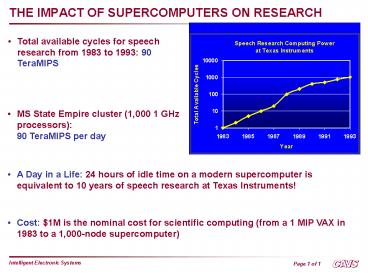Unlocking the Power of Supercomputers: Revolutionizing Research and Development

H3. Introduction to Supercomputers
Imagine a machine that can process information at speeds of up to several petaflops, perform complex calculations in seconds, and store massive amounts of data that can be accessed at a moment’s notice. This is the power of supercomputers. Supercomputers have become the backbone of modern research and development, enabling scientists and researchers to tackle complex problems that were previously thought to be insurmountable.
H3. The History of Supercomputers
Supercomputers have a long and fascinating history that dates back to the 1960s. The first supercomputer, the Control Data Corporation’s (CDC) 6600, was unveiled in 1964. This machine could perform calculations at a rate of 3 million instructions per second, making it the fastest computer in the world at that time. Since then, supercomputers have undergone significant advancements, with the development of parallel processing, distributed computing, and advanced architectures.
H3. The Impact of Supercomputers on Research and Development
Supercomputers have had a profound impact on research and development in various fields, including:
- Accelerating Scientific Discoveries: Supercomputers enable scientists to model complex phenomena, such as weather patterns and molecular interactions, at unprecedented scales and resolutions. This has led to breakthroughs in fields such as climate science, materials science, and medicine.
- Improving Medical Research: Supercomputers are being used to develop personalized medicine, identify new treatments for diseases, and simulate complex biological systems. For example, the Folding@home project uses distributed computing to simulate protein folding, which can help researchers understand the mechanisms of diseases such as Alzheimer’s and Parkinson’s.
- Enhancing Energy Research: Supercomputers are being used to model complex energy systems, simulate climate scenarios, and optimize energy consumption patterns. This has led to breakthroughs in energy efficiency, renewable energy, and climate change mitigation.
- Advancing Materials Science: Supercomputers enable scientists to simulate the behavior of materials at the atomic scale, which has led to the development of new materials with unique properties, such as superconductors and nanomaterials.
H3. Real-World Applications of Supercomputers
- Weather Forecasting: Supercomputers are being used to improve weather forecasting, enabling scientists to predict storms and meteorological events with greater accuracy.
- Material Science: Supercomputers are being used to develop new materials, such as superconductors and nanomaterials, which have the potential to revolutionize industries such as energy and aerospace.
- Pharmaceutical Development: Supercomputers are being used to design new drugs and simulate the behavior of complex biological systems, which has led to breakthroughs in disease treatment and prevention.
- Climate Modeling: Supercomputers are being used to model complex climate scenarios, which has helped scientists understand the impacts of climate change and develop strategies for mitigation and adaptation.
H3. The Future of Supercomputers

As the demand for computational power continues to grow, researchers are exploring new architectures and technologies to create even faster and more efficient supercomputers. Some of the key trends shaping the future of supercomputers include:
- Cloud Computing: The increasing adoption of cloud computing is enabling scientists to access supercomputing resources on-demand, without the need for expensive hardware.
- Artificial Intelligence: The integration of artificial intelligence (AI) and machine learning (ML) technologies is enabling scientists to develop more efficient and effective algorithms for solving complex problems.
- Quantum Computing: The development of quantum computing has the potential to revolutionize the field of supercomputing, enabling scientists to solve problems that are currently unsolvable.
H3. How You Can Get Involved
Supercomputers are not just the domain of academia and industry; citizens can also contribute to supercomputing research through various initiatives such as:
- Distributed Computing: Projects such as Folding@home and BOINC enable citizens to contribute to supercomputing research by donating their computer processing power.
- Cloud Computing: Cloud computing platforms such as AWS and Microsoft Azure provide access to supercomputing resources on-demand, enabling scientists and researchers to tackle complex problems without the need for expensive hardware.
- Supercomputing Conferences: Conferences and workshops provide opportunities for scientists, researchers, and industry professionals to share knowledge and experiences in the field of supercomputing.
H3. Conclusion
Supercomputers have revolutionized research and development in various fields, enabling scientists and researchers to tackle complex problems that were previously thought to be insurmountable. As the demand for computational power continues to grow, researchers are exploring new architectures and technologies to create even faster and more efficient supercomputers. Whether you’re a scientist, researcher, or simply a curious citizen, there are many ways to get involved in supercomputing research and contribute to the advancement of human knowledge.
Share this article with your network and let’s spread the word about the impact of supercomputers on research and development.


